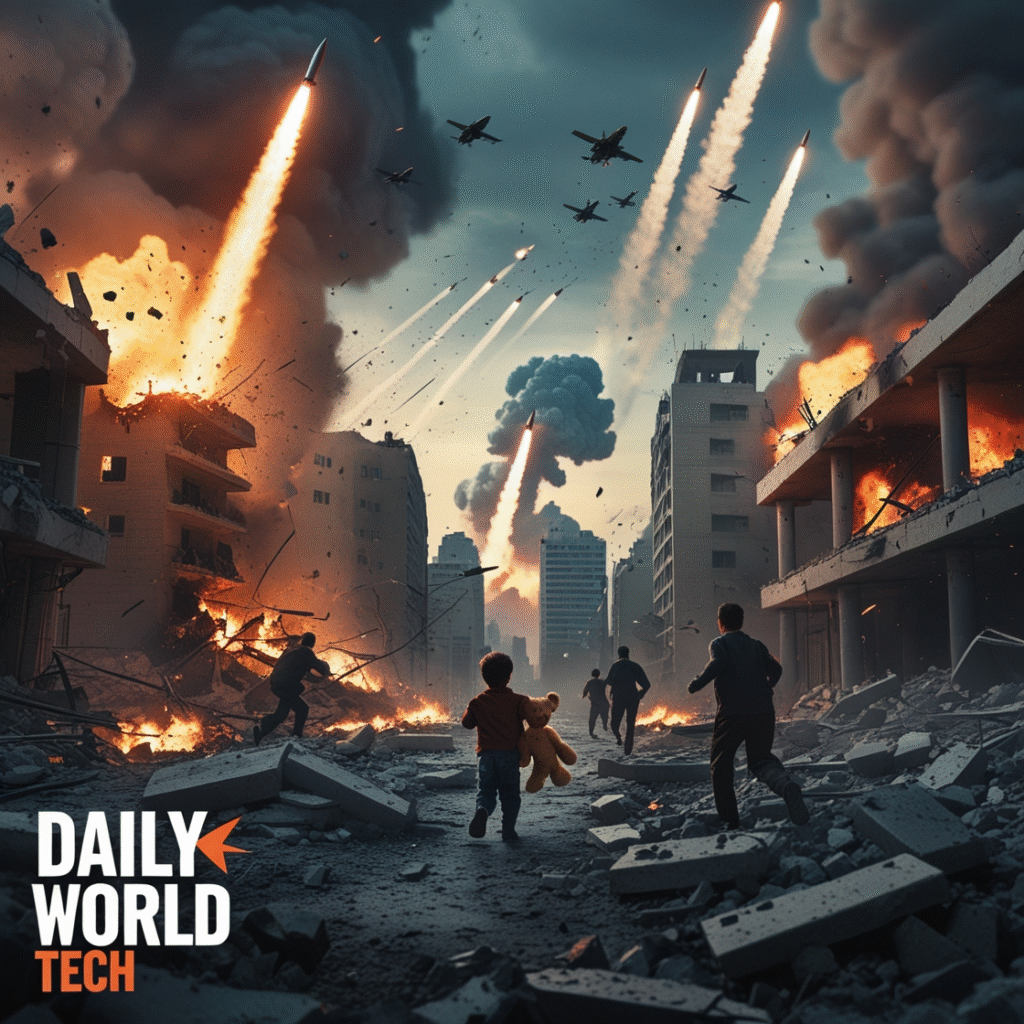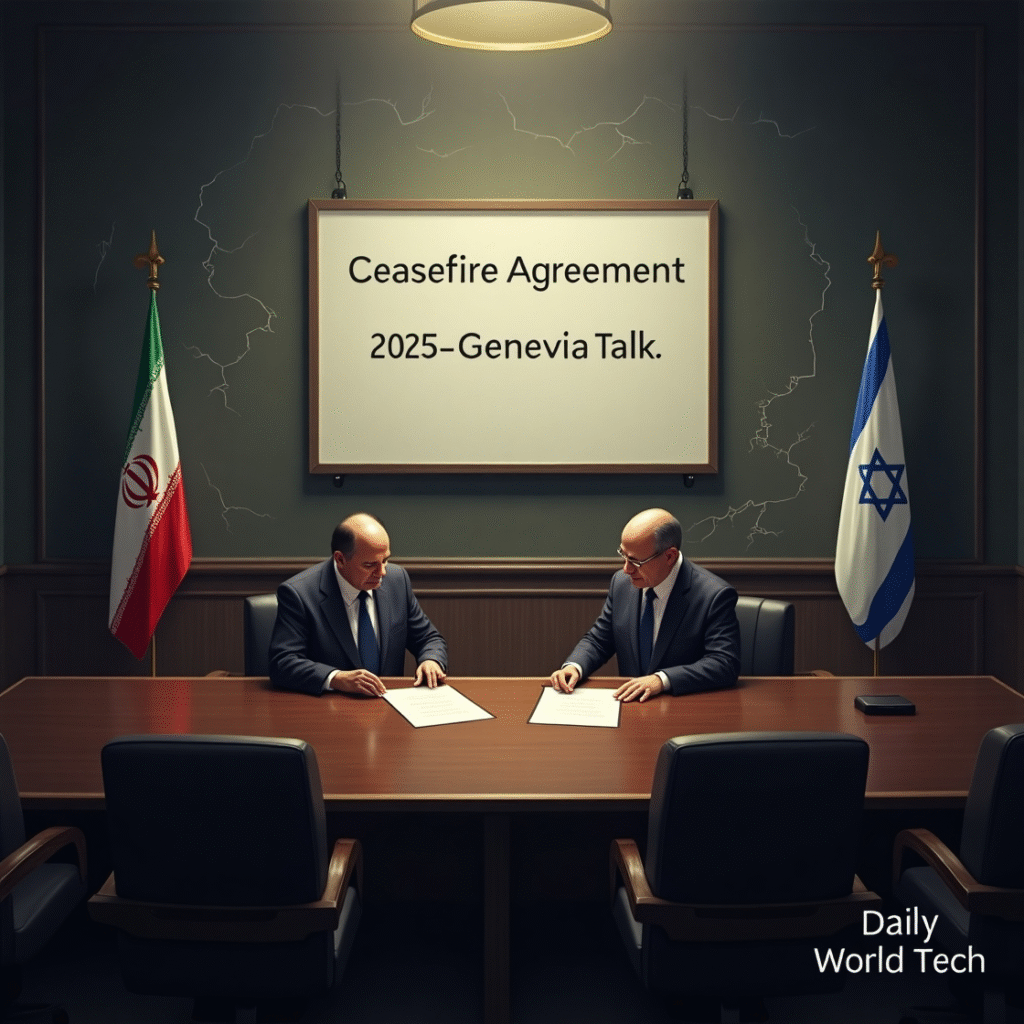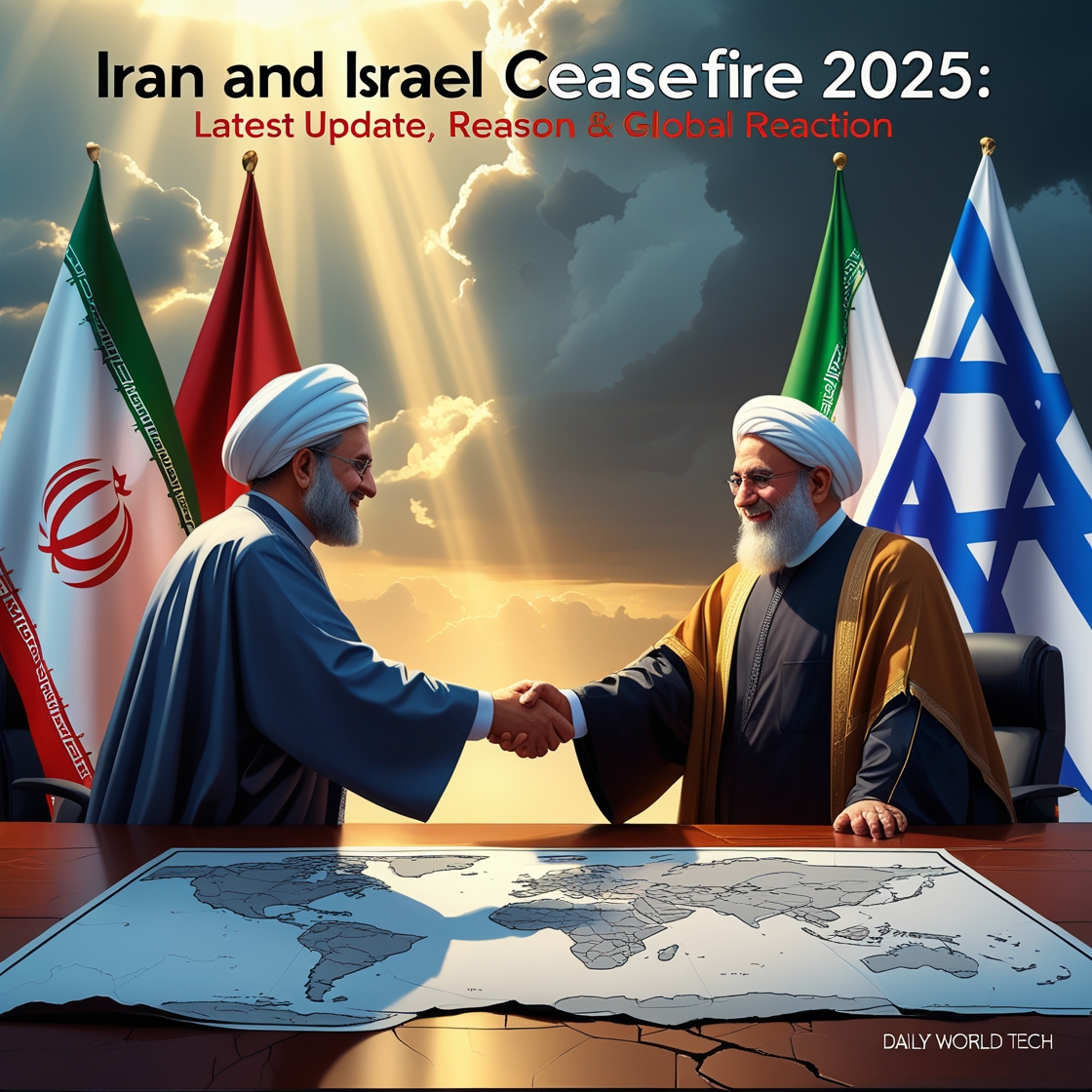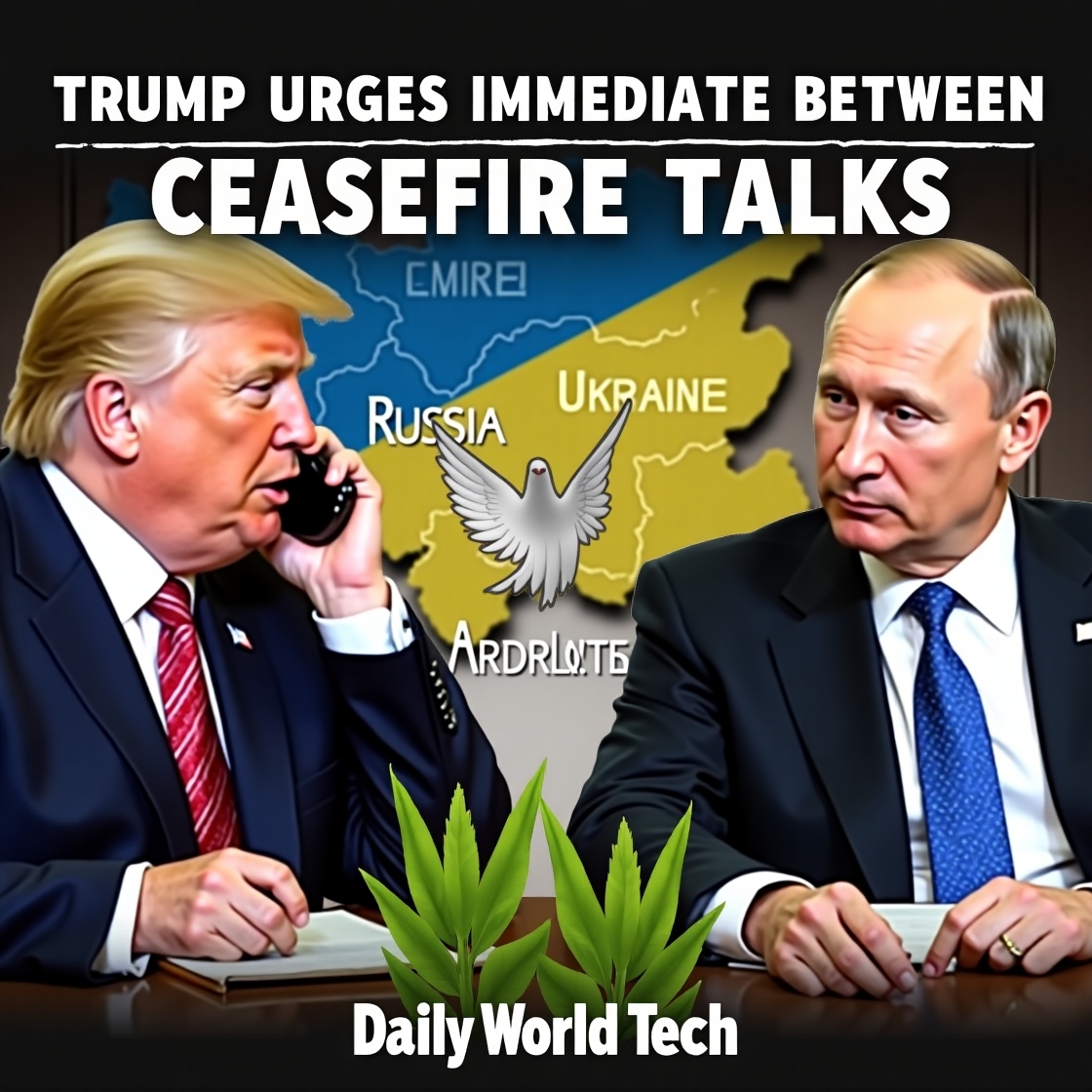🕊️ 1. Introduction: A Historic Pause in Hostilities
In mid‑June 2025, tensions between Iran and Israel Ceasefire escalated dramatically—with both nations exchanging strikes on each other’s territories in what many are calling the “12‑Day War.” Then, unexpectedly, a ceasefire was declared, shocking global audiences and prompting relief and scepticism alike. What drove this de‑escalation, and what could it mean for regional and global stability?

2. Escalation Into Direct Conflict
⚔️ Precision Strikes and Counterstrikes
• Israeli air operations destroyed Iran’s missile sites, nuclear‑adjacent facilities, and communications infrastructure—killing key IRGC leaders and scientists.
• Iran responded with coordinated drone and ballistic missile barrages targeting Israeli cities such as Tel Aviv, Haifa, and Ashdod—causing civilian and infrastructure damage.
💔 Civilian Toll and Chaos
• Iranian sources report hundreds killed, including top scientists, with casualties exceeding 400.
• In Israel, missile barrages caused numerous civilian injuries and fatalities, with some strikes hitting hospitals.
• Tehran experienced mass evacuations, blackouts, and widespread panic.

3. Ceasefire Declared: Surprise and Uncertainty
🧭 Mixed State Messaging
Although Iran’s foreign ministry hinted at readiness to de‑escalate, they emphasized that negotiations couldn’t begin until Israeli strikes ceased. Meanwhile, Israel maintained readiness to act further if threats persisted.
🌐 Diplomatic Channels Activated
Iran enlisted Gulf mediators Qatar, Saudi Arabia, and Oman to coax both the U.S. and Israel toward a pause. European diplomats met in Geneva, pressing for simultaneous halts in hostilities.
🇺🇸 Trump’s Role and Realpolitik
Former President Trump asserted he had brokered a ceasefire through phased escalation—Iran would stop first, followed by Israel within 24 hours—placing pressure on both to comply.
4. Why Now? The Driving Factors
🎯 Military and Strategic Realities
Israel achieved significant blows to Iran’s military and nuclear infrastructure. With diminishing returns and growing international scrutiny, both parties saw a temporary halt as preferable.
📌 Global and Regional Pressure
• UN Secretary-General Guterres, along with Russia and China, issued urgent appeals for restraint.
• European nations supported diplomacy tied to nuclear discussions.
• Gulf mediators offered Iran flexibility in nuclear talks in exchange for an immediate ceasefire.
💸 Economic Realities
Ongoing conflict threatened oil markets and regional trade routes. A pause helped stabilize Gulf financial indices and energy prices.
5. Global Response: Between Optimism and Doubt
🙌 Relief and Encouragement
UN and G7 officials praised the pause as a vital step away from a broader war. Analysts saw it as a chance to revive nuclear diplomacy.
⚠️ Skepticism and Warning
Observers cautioned that, without clear enforcement, this ceasefire could collapse at any moment—especially given past failures.
🤝 Regional Dynamics
• Iranian proxies like Hezbollah and Houthis paused alongside the ceasefire, signaling a broader regional détente.
• Saudi Arabia signaled openness to normalization with Israel—though tied to Palestinian progress.
6. Path Ahead: Risks and Opportunities
✅ Diplomatic Potential
• The ceasefire could revive nuclear diplomacy—especially if Iran agrees to limits, inspections, and sanctions relief.
• Humanitarian aid and reconstruction efforts may resume, conditional on lasting calm.
⚠️ Fragility of the Pause
Without formal verification and accountability mechanisms, any violation—intentional or accidental—could reignite conflict.
🧨 Proxy Instability
Even with direct hostilities paused, proxy actors (Hezbollah, Houthis, Yemen) may continue to destabilize the region.
🏛️ Domestic Political Ripples
Hardliners in both Iran and Israel could exploit any ceasefire missteps, complicating sustained peace.











